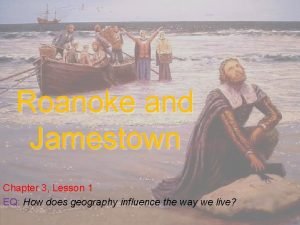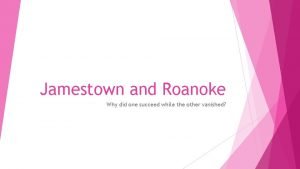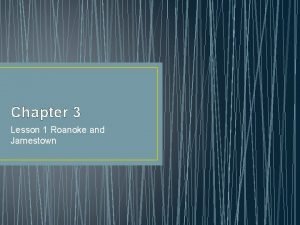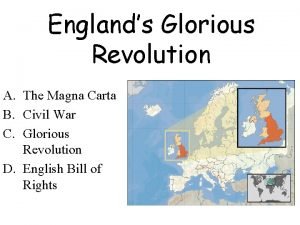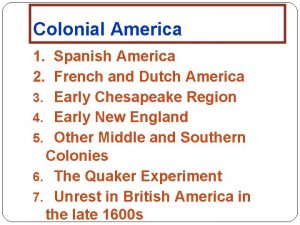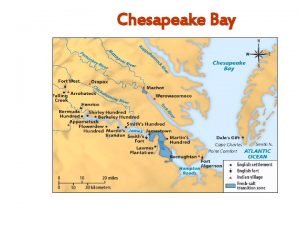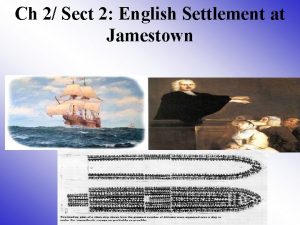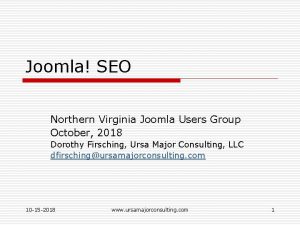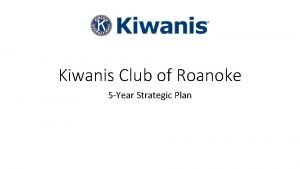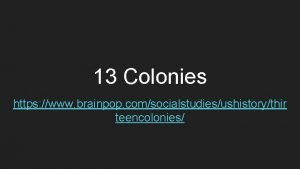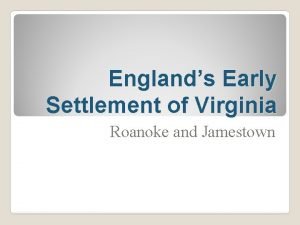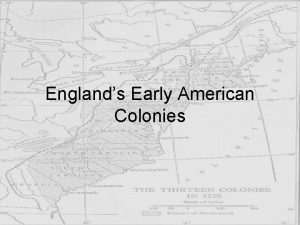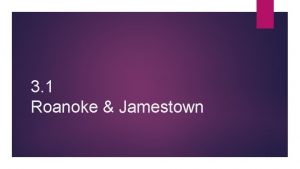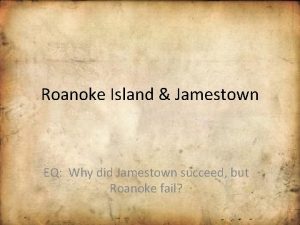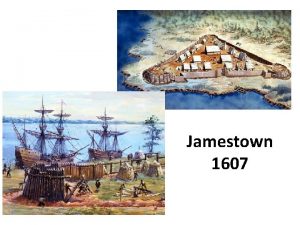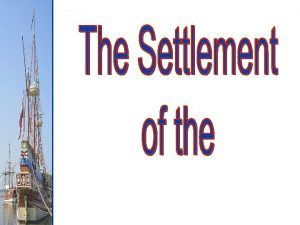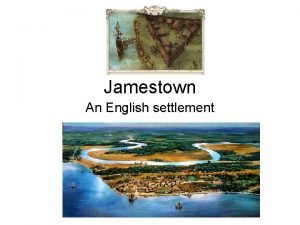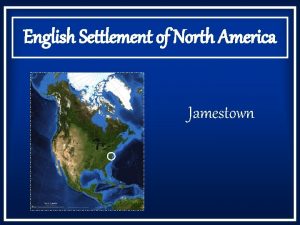Roanoke and Jamestown Englands Early Settlement of Virginia













- Slides: 13

Roanoke and Jamestown England’s Early Settlement of Virginia

Elizabeth I Reigned 1558 – 1603 Wanted colonies to compete with Spain (mercantilism) ◦ ◦ ◦ Spread Protestant faith Provide raw material Be a market for English goods

Roanoke Island (Lost Colony) Sir Walter Raleigh asked Queen Elizabeth of England if he could lead a group of people to begin a colony in the North America. Queen Elizabeth gave Raleigh a charter (a document that allowed colonists to live on land owned by their country. )

Roanoke 1580 s – The Lost Colony Poorly planned and supplied ◦ Failed due to hunger and bad relations with the Native Americans. ◦ All but 15 men went back to England on a ship. John White returned in August 1590 to find no colonists on Roanoke Island. On one of the trees was written CROATOAN.


James I Reigned 1603 -1625 Wanted colonies that would economically help England Wanted to get rid of people who don’t want to follow the Church of England

Jamestown -1607 In 1606, King James I gave permission to the Virginia Company of London to try a colony. ◦ Joint-stock company ◦ First to settle Jamestown was named after the King James I and Virginia was named after Elizabeth I, the Virgin Queen of England.

Jamestown On May 14, 1607, the settlers began building the first English permanent settlement on the James River in Virginia. Colony led by John Smith ◦ No precious metals found w. Click Here to see a Virtual tour of Jamestown

Hardship in Jamestown Gentlemen work. do not want to ◦ John Smith – “He who will not work, shall not eat” John Smith returns to England in 1609 ◦ Leads to poor colonial leadership Not educated in how to plant food in Virginia. ◦ The Starving Time – 1609 Native American attacks Disease

Jamestown Thrives John Rolfe – arrives in Jamestown in 1610 Experimented with planting Caribbean tobacco seeds in fertile Virginia soil. The cash crop was the savior of the colony of Jamestown and Virginia Free Enterprise ◦ Business not interfered with by government ◦ Colonists farmed the land for profit ◦ Private land ownership expanded

House of Burgesses Start of Representative Government 1619 – Virginia Company allows creation of a representative body ◦ Gave people a voice in their government ◦ Ten towns sent 2 representatives called burgesses to an assembly ◦ July 30 – House of Burgesses met at a church in Jamestown

New Arrivals change Jamestown “ 20 & odd Negroes, which the governor & cape merchant bought…at the best & easiest rate they could” ◦ Written by John Rolfe in 1619 Jamestown – 1 st English settlement to use African slaves

A Review of Jamestown (Virginia) 1607 Created by Virginia Company of London ◦ Joint Stock Company ◦ created colony to make profit for investors Many hardships faced John Rolfe’s tobacco plant created wealth Created House of Burgesses in 1619 ◦ First representative body in American colonies John Smith
 Roanoke and plymouth similarities
Roanoke and plymouth similarities Guided reading lesson 1 roanoke and jamestown
Guided reading lesson 1 roanoke and jamestown Why did roanoke fail and jamestown succeed
Why did roanoke fail and jamestown succeed Lesson 1 roanoke and jamestown
Lesson 1 roanoke and jamestown Magna carta summary
Magna carta summary Jamestown settlement
Jamestown settlement Jamestown chesapeake bay
Jamestown chesapeake bay Jamestown settlement
Jamestown settlement Early cpr and early defibrillation can: *
Early cpr and early defibrillation can: * Seo northern virginia virginia
Seo northern virginia virginia Va roanoke regional loan center
Va roanoke regional loan center Roanoke island 1585
Roanoke island 1585 Roanoke kiwanis club
Roanoke kiwanis club 13 colonies brainpop
13 colonies brainpop

